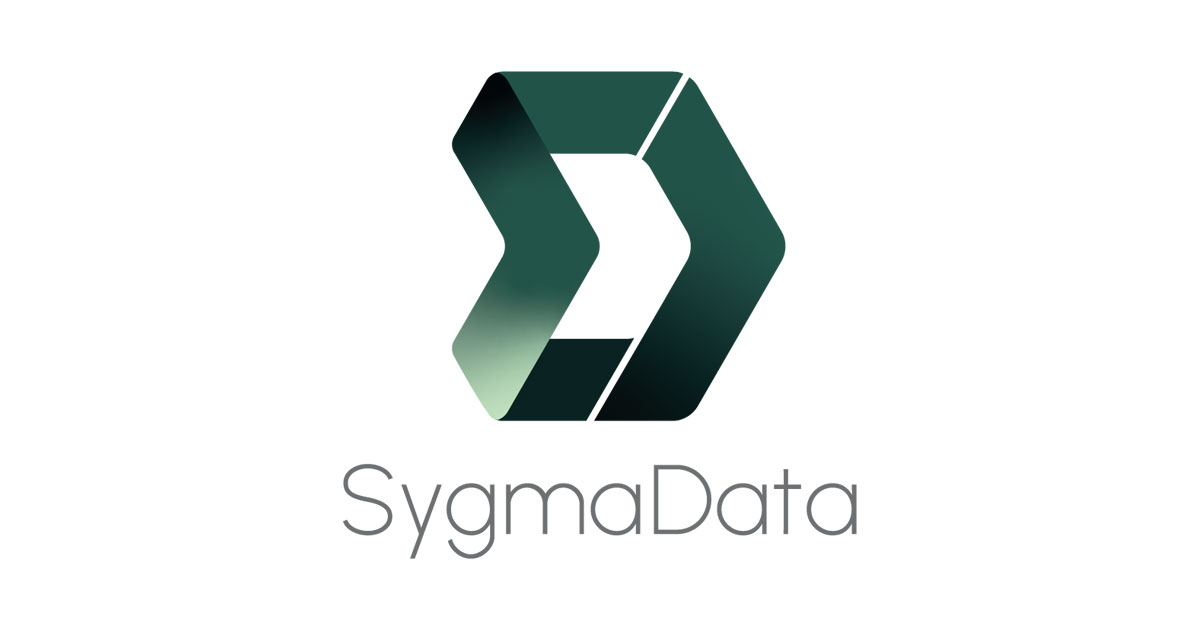Download the PDF document here: The Economics of Data Fabric ROI of Data Industrialisation for DSOs and Utilities
The Economics of Data Fabric ROI of Data Industrialisation for DSOs and Utilities
Explore the ROI of data fabric for DSOs and utilities. Learn how data industrialization boosts efficiency, reduces costs, and enables smart grid modernization.
Table of Contents
Insights and Recommendations Engine. 6
Data Preparation and Delivery Layer 6
Accessibility and Integration for Users. 7
Cost Reduction and Efficiency. 8
Impact on Decision-Making and Production Speed. 8
Challenges and Considerations. 8
Project Management in Energy and Utilities. 10
Robotic Process Automation. 10
Data Fabric Implementation. 10
Challenges and Limitations. 12
AI and Machine Learning Integration. 14
Rise of Telecommunications and IT Solutions. 14
Focus on Customer Experience (CX) 14
Ongoing Data Fabric Development 14
summary
The economics of data fabric and the return on investment (ROI) of data industrialization for distribution system operators (DSOs) and utilities represent a pivotal shift in how organizations manage and leverage data. As the utilities sector grapples with increasing data complexity stemming from the proliferation of Internet of Things (IoT) devices and smart technologies, the traditional methods of data warehousing have proven insufficient. Data fabric offers a dynamic architectural framework that enhances real-time data integration and processing, enabling utilities to harness vast amounts of structured and unstructured data effectively for improved operational efficiency and decision-making capabilities.[1][2][3]
Notably, the economic implications of implementing data fabric solutions are profound. By unifying disparate data sources, utilities can significantly reduce operational costs, enhance productivity, and accelerate decision-making processes. For instance, studies suggest that data fabric can lead to a 25% increase in data engineering productivity and a 65% reduction in decision-making time, demonstrating a clear ROI for organizations adopting these technologies.[4][5][6] However, the implementation of data fabric is not without challenges, including high deployment costs, interoperability issues with legacy systems, and the potential for project stagnation due to cross-functional complexities.[7][8]
In addition to cost benefits and enhanced productivity, the data fabric framework fosters greater agility in responding to market demands and operational challenges, providing organizations with a competitive edge in the fast-evolving energy landscape. As utilities continue to modernize their data management strategies, understanding the economic benefits and addressing the associated challenges will be critical for successfully navigating this transformative period.[3][9][4]
The ongoing development of data fabric technologies is further fueled by advancements in artificial intelligence (AI) and machine learning (ML), which promise to refine data management capabilities and optimize operational processes. As organizations embrace these innovations, the focus will increasingly shift toward maximizing data utilization and enhancing customer experience, ensuring that the benefits of data fabric extend beyond internal efficiencies to create value for stakeholders in the broader energy ecosystem.[8][10][11]
Historical Context
The evolution of data management in the utilities sector has been marked by a growing complexity of data sources and the need for more efficient data integration methods. Traditionally, data warehousing (DWH) served as the primary method for integrating data from various sources into a common repository. However, this approach often faced challenges related to data duplication, latency, and the inability to provide real-time insights, which are crucial for today’s fast-paced decision-making environments in utilities[1][2].
As the Internet of Things (IoT) expanded and smart technologies were integrated into utility operations, the volume, variety, and velocity of data surged significantly. Utilities began to struggle with managing this influx of data, which included both structured and unstructured formats from numerous sensors and external sources[12][2]. The rise of big data analytics highlighted the limitations of traditional DWH, prompting the exploration of alternative solutions that could effectively contextualize and leverage data across the enterprise.
In response to these challenges, data fabric emerged as a transformative architectural framework designed to connect disparate data sources dynamically without the need for physical data movement. This innovative approach facilitates real-time data integration and processing, allowing utilities to analyze vast amounts of information quickly and make informed decisions[3][13]. By utilizing advanced technologies such as artificial intelligence (AI) and machine learning (ML), data fabric enables a more agile and responsive data management environment, essential for meeting the evolving demands of the utilities industry[14].
The implementation of data fabric has proven beneficial in addressing the historical limitations of data management systems, streamlining data access, and fostering business agility. This paradigm shift underscores the importance of modernizing data management strategies within utilities to harness the full potential of their data assets, ultimately leading to improved operational efficiency and enhanced decision-making capabilities[13][14].
Components of Data Fabric
Data fabric comprises several core components that work in harmony to facilitate seamless data access, processing, and analysis. These components are designed to address the unique needs of organizations, ensuring efficient integration and utilization of data across diverse sources and systems.
Knowledge Graph
A knowledge graph serves as a visual representation of data relationships within the data fabric. It employs uniform identifiers and flexible schemas to connect various data sources, enabling users to easily search and explore the entirety of available data[15]. By illustrating the relationships between entities, the knowledge graph aids both human users and AI/ML algorithms in interpreting data meanings effectively.
Insights and Recommendations Engine
This component is crucial for generating optimized data pipelines tailored for both operational and analytical use cases. The insights and recommendations engine processes data to deliver actionable insights, helping organizations make informed business decisions quickly and effectively[3].
Data Preparation and Delivery Layer
The data preparation and delivery layer is responsible for retrieving data from any source and delivering it to various targets. This is achieved through multiple methods, including ETL (Extract, Transform, Load), APIs, and real-time messaging. This layer ensures that businesses can process and distribute data as required, thus enhancing operational efficiency[3].
Metadata Management
Metadata acts as a fundamental component of the data fabric, providing context, lineage, and structure to data. It enables the seamless connection of disparate data sources, facilitating easier access and use across various business functions[16]. Effective metadata management involves transitioning from passive to active metadata, thereby enhancing data usability and reliability. This dynamic management approach transforms the data fabric into a powerful tool for efficient data governance and analytics.
Data Integration Backbone
A robust data integration backbone is essential for the effective functioning of a data fabric. It ensures that data from diverse sources can be integrated dynamically, without the need for physical movement to a central repository[3]. This capability not only allows for real-time processing of data but also supports the architecture’s flexibility and adaptability, making it suitable for various hosting environments and tech stacks[9].
Accessibility and Integration for Users
To maximize the adoption of data fabric within organizations, it is vital that it integrates seamlessly with different data delivery styles, such as ETL, streaming, and data virtualization. This integration empowers both technical and non-technical users to access and utilize data effectively, fostering a self-service culture that accelerates decision-making processes[9].
Economic Implications
The implementation of data fabric solutions offers significant economic implications for organizations, particularly in the utilities and data industrialization sectors.
Cost Reduction and Efficiency
One of the primary advantages of data fabric is its ability to reduce operational costs. By unifying multiple data sources into a single framework, organizations can eliminate redundancies and inefficiencies often associated with traditional data management systems[4]. This unification allows enterprises to forgo investments in multiple storage solutions for different departments, thereby significantly decreasing storage costs while streamlining management processes[4][17]. Furthermore, the automation of integration and administration tasks associated with data handling can lead to drastic cuts in manual labor costs, further enhancing overall economic efficiency.
Enhanced Productivity
Data fabric solutions not only decrease costs but also enhance productivity across various business functions. For instance, the implementation of data fabric can lead to a 25% increase in data engineering productivity due to a 90% reduction in the time spent on searching, integrating, and debugging data[5]. This productivity gain translates into substantial financial savings, illustrating the return on investment (ROI) organizations can expect when adopting these technologies.
Impact on Decision-Making and Production Speed
The relationship between data fabric implementation and production speed demonstrates a strong positive correlation, with studies indicating an average decision-making time reduction of 65% due to unified data access[6]. This rapid access to quality data not only expedites internal processes but also enhances the organization’s ability to respond to market demands and operational challenges. The data fabric’s capability to analyze and leverage both structured and unstructured data effectively empowers organizations to derive actionable insights that are crucial for strategic decision-making[9].
Challenges and Considerations
Despite these benefits, organizations must also be aware of the challenges associated with implementing data fabric solutions. High costs related to the expertise needed for deployment and the high rate of failure in initiating Industry 4.0 projects can present significant hurdles[7]. Many of these initiatives are cross-functional, involving multiple stakeholders with varying objectives, which can complicate the establishment of clear goals and lead to project stagnation[7]. Therefore, it is crucial for organizations to invest in proper training and to establish a clear framework for data governance to fully realize the economic advantages of data fabric.
Case Studies
Project Management in Energy and Utilities
Numerous case studies highlight the application of project management within the energy and utilities sector. For instance, Ontario Power Generation (OPG) achieved project excellence through the establishment of an Enterprise Project Management Office, leading to a significant shift in public perception and enhanced credibility in executing projects[18]. Similarly, DTE Energy has effectively powered multiple major programs by continuously improving its project management processes, showcasing the vital role of structured management in achieving operational success[18].
Industrial Data Analysis
A pair of instructive case studies have emerged in the realm of industrial data analysis. These studies examine the distinctions between large-scale, multi-plant data analytics projects and localized process control data analytics efforts. The insights gained emphasize the importance of data analytics in addressing skills gaps within the industrial landscape, with the large-scale projects offering a comprehensive, multi-year approach compared to the more focused efforts seen in localized initiatives[19].
Robotic Process Automation
Robotic Process Automation (RPA) has been transformative in the energy sector, automating various processes from meter reading to compliance. Noteworthy case studies have illustrated how RPA can drive efficiency and reduce costs, ultimately enhancing service quality. One study indicated that organizations deploying RPA, specifically through Microsoft Power Automate, experienced an impressive ROI of 248% and a net present value of nearly $40 million, highlighting the significant financial benefits of strategic RPA implementation[20][21]. Companies have reported substantial time savings, with one noting a reduction of 70 to 90 percent in the time spent correcting errors and checking work due to automation[22].
Data Fabric Implementation
The concept of data fabric has gained traction as a means to unify disparate data sources within organizations. Case studies demonstrate its effectiveness in reducing data silos, enhancing access, and improving overall data quality. Organizations that have implemented data fabric solutions reported a better position to unlock the full potential of their data, leading to informed decision-making and improved economic outcomes[4]. This comprehensive framework integrates various data management technologies, ensuring efficient data flow across all systems and departments, thus maximizing the value of data within enterprises[23].
Challenges and Limitations
Technical Challenges
One of the primary technical challenges in implementing data fabric solutions is ensuring interoperability among diverse and complex systems, including hardware, software, and communication networks. The reliance on proprietary technologies from various vendors can result in compatibility issues, which may lead to stranded investments and hinder the integration of new technologies into the grid[8]. Additionally, the vast amounts of data generated by smart grid sensors raise concerns about data processing capabilities and cybersecurity vulnerabilities. Achieving seamless communication and data sharing across various platforms is essential to address these hurdles[8].
Organizational Resistance
Utilization and proficiency metrics play a crucial role in determining the success of data fabric projects. Utilization measures the extent to which employees adopt new working methods, while proficiency assesses their effectiveness once these changes are implemented. When employees resist adopting new processes or find workarounds, the potential value of data fabric initiatives diminishes, leading to significant and quantifiable costs for the organization. Without effective organizational change management (OCM), projects may incur inefficiencies that limit their overall value and success[24].
Economic Challenges
Despite the potential benefits of data fabric, economic barriers significantly affect its adoption. Organizations often exhibit reluctance to embrace edge technologies, particularly those related to storage, due to perceived security risks. This hesitancy persists even in the face of reliable data fabric solutions, which can be attributed to a lack of awareness and the need for modified architectures to implement these technologies. Consequently, investment in trial and implementation phases is often limited, hampering the growth of the global data fabric market[25].
Integration Issues
The integration of legacy systems poses significant challenges that can impede market growth. Many utility companies operate on outdated infrastructure that complicates the implementation of modern data solutions. Legacy systems may not support the integration of newer technologies, which can lead to inefficiencies and restrict the realization of potential benefits from data fabric initiatives[26]. The inability to consolidate various data types, such as images and voice recordings, further complicates the integration process, making it challenging to achieve a holistic view of operations[26].
Data Silos
The challenge of data silos remains prevalent across organizations, with separate systems managing customer records, operational data, and trading histories. This fragmentation creates confusion and inefficiencies, as different teams gravitate toward various solutions, further complicating data access and analysis[26]. Utility companies, in particular, are concerned about cybersecurity and intellectual property issues, which can hinder their ability to capitalize on the data they possess. Thus, addressing these data silos is critical for organizations looking to leverage their data assets effectively and maximize the potential of data fabric solutions[26][27].
Future Trends
The future of data fabric technologies is closely tied to the evolution of energy management, particularly in the context of the Internet of Energy (IoE) and artificial intelligence (AI) advancements. These innovations are set to redefine energy consumption patterns, enhance sustainability efforts, and generate new economic opportunities within the green economy[8]. However, it is essential to address the societal implications of smart grid technologies to ensure equitable access to energy resources as the landscape evolves[8].
AI and Machine Learning Integration
Industrials, materials, and manufacturing organizations are increasingly recognizing the potential of AI and machine learning (ML) to enhance operational efficiencies and decision-making. By mid-2026, a significant majority of these sectors anticipate deploying ML model performance monitoring to optimize their processes[28]. This trend will likely extend to the data fabric space, as organizations seek to improve their ML capabilities within integrated data management solutions. Enhanced performance monitoring will be critical for maintaining the quality and reliability of AI-driven systems[28].
Rise of Telecommunications and IT Solutions
The telecommunications and IT segments are poised for substantial growth due to the rising demand for data fabric solutions that address data management challenges across multi- and hybrid-cloud environments. As industries grapple with increasing data volumes, particularly from emerging regions, the adoption of data fabric architectures will become essential for managing this complexity[25]. Organizations will increasingly rely on integrated data management to ensure real-time data processing and compliance with regulatory standards[29].
Focus on Customer Experience (CX)
Emerging trends in customer experience (CX) for public services will be influenced by the incorporation of AI and machine learning, promoting omnichannel service delivery and sustainability[10]. Organizations will leverage innovative digital technologies and predictive analytics to enhance service personalization and proactive communication, thus fostering stronger relationships with stakeholders. The continuous assessment of CX strategies will be vital in aligning with evolving user expectations and industry best practices[10].
Ongoing Data Fabric Development
Data fabric is not a static solution but rather an ongoing process that requires continuous monitoring and optimization. As organizations adopt advanced technologies, such as generative AI and machine learning, they will enhance their data fabric capabilities, enabling more sophisticated data analysis and automated decision-making processes[11]. The ability to create an abstraction layer through data fabric will help businesses adapt to technological changes while safeguarding their investments[30].
References
[1]: What is a Data Fabric and How Does it Complement my Data …
[2]: How Utilities Leverage Data Analytics to Improve Efficiency and …
[3]: Examples of Data Science in the Utilities Industry | HEAVY.AI
[4]: Understanding Data Fabric: Key Uses and Trends – WaferWire
[5]: Why Invest in Data Fabric? Driving Strategic Growth and ROI
[6]: What is Data Fabric: Architecture, Examples, & Purpose – Airbyte
[7]: What is Data Fabric? Why You Need It & Best Practices – Qlik
[8]: The Ultimate Guide to Data Fabric – TimeXtender
[9]: Data Fabric: The Future Of Data Architecture – Monte Carlo Data
[10]: The economic benefits of adopting data fabric solutions
[11]: 5 Data Fabric Use Cases IT Leaders Should Know About – Appian
[12]: Forrester Total Economic Impact™ study: Microsoft Fabric delivers …
[13]: 5 Key Statistics on Data Fabric in Manufacturing Efficiency
[14]: Industry 4.0 Advantages and Disadvantages – Machine Metrics
[15]: Energy & Utilities Project Management Case Studies – PM Solutions
[16]: Industrial data analysis case studies, effectiveness – Hexagon
[17]: 15 Use Cases of RPA in the Energy Sector – Flobotics
[18]: How Automating New Processes Can Exponentially Impact ROI
[19]: 3 High-ROI Robotic Process Automation Use Cases – 2toLead
[20]: Unified Data Fabric: Streamlining Data Management | WhereScape
[21]: Data Fabric as the Backbone of Grid Modernisation and Smart Grids
[22]: Improve Your Utility Network Project ROI Using OCM
[23]: Data Fabric Market Trends, Share, Size & Forecast, 2025-2032
[24]: Evolution of Utilities: The Rise Of The Data Intelligent Utility
[25]: White paper – The usage of data fabrics for energy operators
[26]: 2023 State of Observability for Energy and Utilities Report | New Relic
[27]: Data Fabric Market Growth & Demand 2025-2035
[28]: Customer Experience in Utilities
[29]: What is Data Fabric? – A guide to modern data management – HSO
[30]: 10 Benefits of Data Fabric in Revolutionizing Manufacturing Processes



